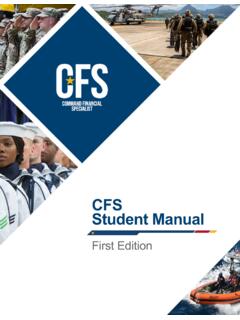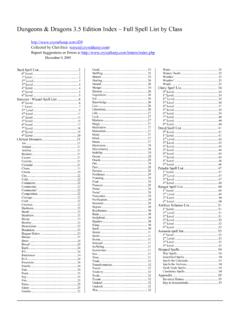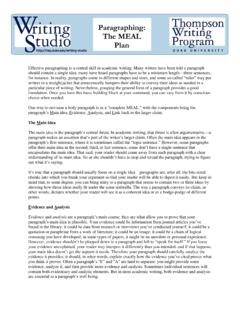Transcription of Trees and Shrubs in Montana - MSU Extension
1 Contents How to Identify Trees and Shrubs ..2 Key to Conifers ( Trees and Shrubs ) ..3 Conifers ( Trees and Shrubs ) ..7 Key to Broadleaved Trees ..28 Broadleaved Trees ..3 Key to Broadleaved Shrubs ..50 Broadleaved Shrubs ..5 Glossary of Terms ..70 Trees and Shrubs for Shelterbelts, Windbreaks ..72 Index ..7 Useful References ..74 CreditsThe illustrations in this publication are reprinted by permission from the following:Intermountain Flora, Vascular Plants of the Intermountain West, , volume 1, pages 225-242; copyright 1972, Jeanne R.
2 Janish, Kay H. Thorne, The New York Botanical New Britton and Brown Illustrated Flora of the Northeastern Unit-ed States and Adjacent Canada, volume 2, pages 23, 42, 49; volume 3, pages 49, 53, 298; copyright 1952, Henry A. Gleason, , The New York Botanical , Shrubs and Woody Vines of the Southwest, Robert A. Vines; copyright 1960. Courtesy of the University of Texas Plants of the Pacific Northwest, Part I, pages 104,108, 110, 114, 116, 118, 120, 124, 126, 128, 130, 134, 816; Part II, pages 36, 43, 75, 82, 86, 96, 187, 189, 215; Part III, pages 88, 102, 106, 118, 127, 143, 159, 163, 168, 191, 413, 416, 419, 462, 519; Part IV, pages 446, 468; Part V, pages 61, 72, 132, 210, 328; copyright 1969, C.
3 Leo Hitchcock, Arthur Cronquist, Marion Ownbey, Thompson, University of Washington John Rumely, Professor Emeritus, Department of Biology, Montana State University, Bozeman. Personal publication of this kind is the product of many people and departments of knowledge. Suggestions for revisions were made by many people in Federal and State agencies. Whatever improvements were made in this revised edition, however, can be attributed principally to Dr. John H. Ru-mely, Professor Emeritus, Department of Biology, Montana State programs of the MSU Extension Service are available to all people regardless of race, creed, color, sex, disability or national origin.
4 Issued in furtherance of cooperative Extension work in agriculture and home economics, acts of May 8 and June 30, 1914, in cooperation with the Department of Agriculture, Douglas L. Steele, Vice Provost and Director, Extension Service, Mon-tana State University, Bozeman, MT 59717. 1 Trees and Shrubs in MontanaThis publication is aimed at making it easy to identify Trees and Shrubs growing naturally within Montana . A few introduced species are also learning how to identify Trees and Shrubs , you will improve your knowledge about Montana and about the growing things near streambeds, mountain slopes-practically everywhere that plants grow. You will find much pleasure in you pursuit, and you will also have at your command the beginning of an excellent names are given for each tree or shrub.
5 One is the common name and the other the scientific or Latin name. A tree or shrub may have several common names, but it will have only one precise scientific forests of Montana cover 22,330,000 acres of the state s mil-lion total acres. The greatest variety of Trees and Shrubs is in the forested areas. Windbreaks, shelterbelts, rivers and creeks are other areas that have numerous Trees and Shrubs . Many can be identified by using the keys in this and Shrubs are useful in many ways. They provide building ma-terials, feed and cover of wildlife, watershed protection, Christmas Trees , power poles, fence posts, railings, and hundreds of other first section of this publication describes the softwood or ever-green species of Trees and Shrubs .
6 They are also called conifers. The sec-ond section describes the hardwood or broadleaved Trees . The third section is about broadleaved Shrubs . Each of the three sections is preceded by a key for your use. Also included is supplementary list of Trees and Shrubs recommended for windbreaks and to Identify Trees and ShrubsTrees and Shrubs will be easy to identify when you become familiar with the keys used in this keys are provided for your use. One is for the conifers (both Trees and Shrubs ), another is for the broadleaved (deciduous) Trees , and the third is for the broadleaved Shrubs . Since these keys have been arranged for the layman, botanical terms have been reduced to a minimum.
7 However, the keys will still be useful for of the Trees that are uncommon, or occur rarely, in Montana have been left out to make the keys short and easy to use. Only about one-fifth of the Shrubs known to be in the state are included will have no difficulty following a key if you think of it in terms of traveling down a road where there are many, well-marked Y intersec-tions. If you read the signs and follow the instructions, you will have no trouble getting where you want to go. In fact, you will get there Essential Points to Remember About Using a Key1. Two opposing characteristics are always set down so that you will have a choice of the one that best fits the plant you want to example: 1.
8 Leaves 4-7 inches 1. Leaves less than 3 inches After you select the characteristic, or proposition, that is the most de-scriptive for your plant, read to the end of the line to find the identifying name. If it is not there, then look down at the next step of proposition, or Don t skip down through the key. Take the contrasting pair of character-istics, or propositions, in order. When you finally find the selection that has a name, check it with the description and Through with One ExampleThe plant we want to identify is a tree. The leaves are needle-like, 2 inches long and in groups of two; cones are woody, 1-2 inches to the conifer key on page 3.
9 Read the pair of propositions number 1. You ll find the second num-ber 1 (page 4) proposition describes the plant best: Leaves needle-like to awl-shaped, 1/4 inch or longer. Read the indented pair of 5s under the proposition 1 that we selected. You ll find the second 5 best described our plant. The leaves in our example are in clusters of 2-5. But we still don t have a Read the next indented pair of propositions, the 7s. Since the leaves are in clusters of two, and not single, we select the first 7. Read the next pair, the 8s. We select the first proposition 8 because our plant has needles in group of twos. We still have to look down at the next indented pair of prepositions.
10 We select the second 9 because the leaves are less than 3 inches long. At the end of this line, we also find the name Lodgepole Pine. We can now turn to the appropriate page inside the bulletin to learn if our specimen corresponds with the illustration and the description. They correspond, so we have probably determined it to ConifersThe conifers are cone-bearing Trees or Shrubs , the cones being woody, papery or berry-like. The leaves are needle-or-scale-like and, for most spe-cies, evergreen. Exceptions are the larches, whose needle-like leaves fall each Leaves mostly scale-like, 1/4 inch long or less. 2. Seeds in woody cones, branchlets 2.



